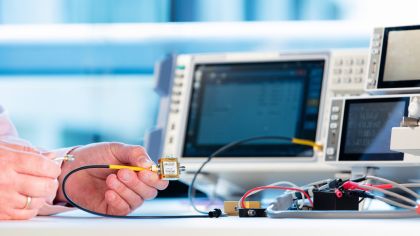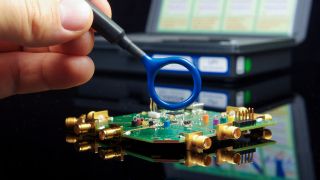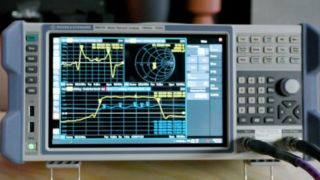Coaxial cable impedance
A coaxial cable, commonly referred to as “coax,” consists of three main components:
- Inner conductor: The central wire that carries the signal.
- Dielectric insulator: A layer of insulating material surrounding the inner conductor.
- Conducting outer shield: A metallic shield that encases the dielectric layer and serves as a return path for the signal as well as protection against external electromagnetic interference.
These parts are usually covered by an additional layer of plastic insulation. The characteristic impedance of a coaxial cable is a function of the inner and outer conductor diameters and the dielectric constant of the insulating material between them. Most coaxial cables are designed with characteristic impedances of either 50 or 75 Ohm. The impedance is often printed on the cable's outer jacket, but when this information is missing, a VNA can be used to measure it.

















